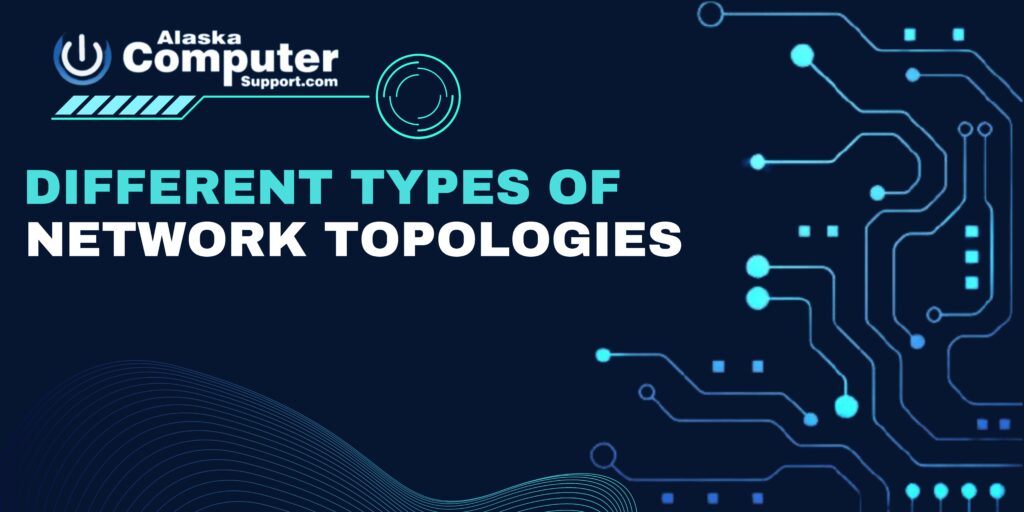Understanding the Different Types of Network Topologies
Introduction
Network topologies play a crucial role in the world of computer networks. They serve as the blueprint for organizing and structuring devices and connections within a network. Understanding different types of network topologies is essential for network administrators, architects, and engineers, as it allows them to design, optimize, and manage efficient and reliable networks. In this blog post, we will delve into the world of network topologies, exploring their significance and how they shape the overall functioning of computer networks.
A network topology refers to the arrangement of devices, nodes, and connections in a network. It defines the pattern and structure through which data and information flow between devices. By understanding network topologies, professionals can make informed decisions regarding network design, scalability, fault tolerance, and performance optimization.
Types of Network Topologies

Now, let’s explore some of the most common types of network topologies and delve into their characteristics, advantages, disadvantages, and use cases.
1. Bus Topology
Bus topology is one of the simplest network topologies. In this setup, devices are connected to a common backbone or a central cable. All devices share this single communication line, and data travels in both directions. This topology is often used in small networks or as a backbone for larger networks.
The advantages of bus topology include its simplicity, cost-effectiveness, and ease of installation. However, it has limitations such as the vulnerability of the entire network if the backbone cable fails and a reduction in performance as more devices are added. Bus topology is commonly found in small office or home networks where cost and simplicity are prioritized.
2. Star Topology
The star topology is widely used in modern networks. In this configuration, each device is connected to a central hub or switch using a separate cable. All communication between devices goes through the central hub, which facilitates easy management and troubleshooting.
One of the key advantages of star topology is its scalability, as adding or removing devices does not impact the entire network. It also provides better performance and fault isolation since a failure in one device does not affect others. However, the reliance on a central hub makes it a single point of failure. Star topology is commonly employed in business networks, data centers, and Ethernet-based networks.
3. Ring Topology
In a ring topology, devices are connected in a circular manner, forming a closed loop. Each device is connected to its neighboring devices, and data circulates around the ring until it reaches its destination. This topology ensures equal access to the network for all devices.
Ring topology offers advantages such as simplicity and the absence of a central hub, reducing the chances of a single point of failure. It also allows for efficient data transmission and is well-suited for networks with a consistent flow of information. However, a failure in one device can disrupt the entire network, making fault tolerance a concern. Ring topology is commonly found in token ring networks and fiber optic networks.
4. Mesh Topology
Mesh topology provides a high level of redundancy and fault tolerance. In this configuration, every device is connected to every other device in the network, forming a fully interconnected mesh. This allows for multiple paths for data to travel, ensuring reliability and resilience.
The key advantage of mesh topology is its robustness, as multiple connections eliminate single points of failure. It also facilitates efficient data transmission and enables scalability. However, the extensive cabling required and the complexity of managing connections make mesh topology more expensive and challenging to implement. Mesh topology is commonly used in large-scale networks, such as wide area networks (WANs), where reliability is crucial.
5. Tree Topology
Tree topology, also known as hierarchical topology, combines features of bus and star topologies. It resembles a tree structure, with multiple branches stemming from a central root node. Each branch represents a bus topology, and the devices connected to each branch form a star topology.
In a tree topology, the root node acts as a central hub, connecting to multiple levels of child nodes. This hierarchical arrangement allows for easy scalability and the organization of devices into logical groups or departments. Data flows from the root node to the child nodes and vice versa, enabling efficient communication within the network.
One of the significant advantages of tree topology is its scalability and flexibility. New devices can be added to the network by extending the branches, without affecting the entire network. It also offers improved fault tolerance since a failure in one branch does not impact the entire network. Additionally, the hierarchical structure allows for better network management, as different branches can be independently controlled and monitored.
However, tree topology has some limitations. The reliance on a central root node makes it a potential single point of failure, and the entire network can be affected if the root node fails. The complexity of the hierarchical structure also requires careful planning and management. Tree topology is commonly used in large networks such as organizational networks, campus networks, and distributed systems.
